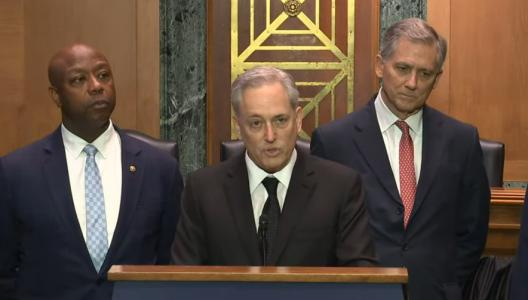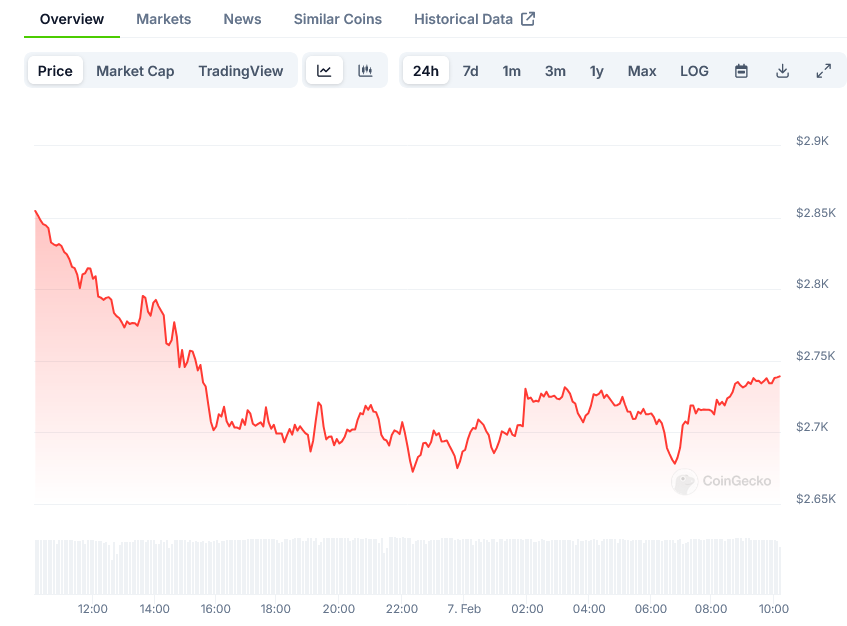AML and KYC: A catalyst for mainstream crypto adoption

One of the quickest ways to ensure crypto’s mainstream adoption is by working with the regulators, which includes implementing effective and investor-centric KYC and AML tools.
For Satoshi Nakamoto, the creator of Bitcoin (BTC), the motivation to create a new payment ecosystem from scratch in 2009 stemmed from the economic chaos caused by the banking sector’s over-exuberant and risky lending practices mixed accompanied by the bursting of the housing bubbles in many countries at the time.
“And who do you think picked up the pieces after the fallout? The taxpayer, of course,” said Durgham Mushtaha, business development manager of blockchain analytics firm Coinfirm, in an exclusive interview with Cointelegraph.
Satoshi recognized the need for a new monetary system based on equity and fairness — a system that gives back power into the hands of the people. A trustless system with anonymous participants, transacting peer-to-peer and without the need of a central entity.

However, a subsequent market downturn — fueled by the initial coin offering bubble bursting — made the crypto industry realize the need to build credibility, authority and trust by proactively working with regulators and legislators. Enter Anti-Money Laundering (AML) and Know Your Customers (KYC) procedures.
Mushtaha started the discussion by highlighting how, unlike fiat currency, transactions in coins and tokens built on blockchain technology are far easier to trace using on-chain analytics and AML tools. Furthermore, introducing KYC procedures to identify and legitimize users across major crypto exchanges resulted in a far more robust financial system that became more impervious to money laundering and other illicit activity.
As a result, it effectively bolstered the sector’s image and enticed more people to trust their hard-earned money in the market. “I see the next bull market becoming a watershed moment, where the masses dive into crypto as fears dissipate and the sector grows exponentially,” he said.
Impact of KYC and AML on the evolution of finance
The early discussions and implementation of global AML and KYC legislation date back five decades, marked by the establishment of the Bank Secrecy Act (BSA) in 1970 and the global Financial Action Task Force (FATF) in 1989. “The risk scenario indicators developed in traditional finance over the past 50 years have been adopted into crypto and niche sectors of the industry, including decentralized finance,” added Mushtaha:
“Where we differ from traditional finance is our on-chain analytical processes. There are no blockchains in traditional finance, so they are missing a huge part of the jigsaw as the blockchain sector is not siloed.”
Sharing insights into what today’s KYC and AML implementation looks like from a provider perspective, Mushtaha revealed that Coinfirm has over 350 risk scenario indicators that cover money laundering, financing of terrorism, sanctions, drug trade, ransomware, scams, investment fraud and more.
With AML getting more sophisticated in the decentralized finance (DeFi) space, “We can now tell you whether your wallet was directly implicated in illicit activities or has inherited risk from another address by receiving assets from ill-gotten gains.” In addition, technology has evolved alongside the crypto ecosystem to provide risk profiles on wallet addresses and transactions based on on-chain analytics.
Declining use of cryptocurrencies in money laundering
Year after year, numerous reports have confirmed a consistent decline in the use of money laundering — with transactions involving illicit addresses representing just 0.15% of cryptocurrency transaction volume in 2021. Mushtaha believes that this finding stands to reason.
“Those involved in illicit activity would be wise to steer clear of blockchain-related assets and stick to the tried and tested dollar. The United States dollar is still the most utilized and preferred currency for money laundering,” he said while adding that, in crypto, once a wallet address has been identified as holding assets that were earned through illegal activity, there’s little the criminal can do.
99.85% of activity on blockchains is NOT crime. Keep this in mind when reviewing the next harsh regulation proposal.
—
Crypto Crime Trends for 2022: Illicit Transaction Activity Reaches All-Time Low in Share of All Cryptocurrency Activity https://t.co/94VB7FiyZb— Sten Tamkivi (@seikatsu) January 16, 2022
With present-day regulatory scrutiny ensuring crypto exchanges are KYC compliant, bad actors find it difficult to off-ramp crypto assets into fiat or spend them in open markets. Speaking about the various methods most commonly used to transfer illicit funds, Mustaha stated:
“Sure, they can try to make use of anonymizing techniques, like mixers, tumblers and privacy coins, but then their assets will be flagged and tainted for using them.”
As cryptocurrencies become more accepted and prevalent globally, criminals will turn to a black market in order to sell ill-gotten assets. Given the availability of marketplaces where money can be spent without KYC, it will be incumbent on future law enforcement agencies to crack down on such sites.
KYC and AML tools can now correlate IP addresses with wallet addresses, and clustering algorithms do an amazing job at identifying associated addresses. Such measures would be difficult, even for state-level actors, to launder through exchanges outside their borders. Mushtaha added, “The Office of Foreign Assets Control (OFAC) has lists of identified addresses belonging to sanctioned persons and entities. The assets in those addresses are too hot for anyone to handle.”
Role of CBDCs in countering money laundering
Central bank digital currencies (CBDCs) could offer central banks a level of control never seen in fiat currency. Imagine all of the issues with fiat, like government manipulation and inflation, but now with the power of on-chain analytics. CBDCs will allow more granular scrutiny of users’ spending habits and central banks to freeze holdings, limit them, set expiry dates, automatically tax every transaction or even decide what can and can’t be bought with them. “Every merchant, financial institution and retail customer would also need to comply with KYC, thereby disincentivizing money laundering,” said Mustaha.
Libra, a permissioned blockchain-based stablecoin launched by Facebook’s parent company Meta, failed to gain traction when it was launched in 2019. Consequently, mainstream conversations around Meta’s crypto initiatives catalyzed numerous governments to try out CBDCs, with China being one the first to launch its CBDC.

The possibilities for currency control are not the sole motivations for this wave of government-sponsored innovation. While pointing out that governments no longer follow the gold standard, Mustaha highlighted present-day inflation as a direct result of federal and central agencies printing money at will.
“The United States printed more dollars than ever existed before. And the result of that is rampant inflation that’s off the charts.”
Moreover, Mustaha argued that increasing the interest rates too much, too quickly, would cause a catastrophic cascade of overextended debt-ridden financial institutions to collapse. As a result, CBDCs stand out as a solution for central banks, adding that “For the first time, central banks could destroy money as well as create it.”
Evolution of AML, KYC and technological advancements
Based on his extensive experience in the AML/KYC sector, Mushtaha stated that technology adapts to the evolution of regulations and not the other way round. Startup trading platforms that decide to integrate AML tools have the option to apply for a virtual asset service provider (VASP) and securities licenses. “Becoming compliant means a huge pool of opportunities becomes open to you. Funding in this space is only available to those focusing on compliance.” As a result, AML solution providers find themselves bridging the gap between the crypto world and the compliant financial system.
Mushtaha shared an instance working with a startup that is currently developing a nonfungible token (NFT)-based KYC solution using zero-knowledge Proofs. “The cleverness comes from their recognition that NFTs used for KYC don’t need to solve the double spend problem, so can be disengaged from the blockchain entirely. This then allows for private biometric data to be stored on the NFT and a zk-Proof to be sent to each platform where the individual wants to open an account.”
Although the solution is designed to perform as a centralized entity for storing the NFT information “most likely on a permissioned (publicly inaccessible) chain,” Mushtaha affirms it’s a step in the right direction as NFTs serve KYC use cases over the next decade as digitalization continues to permeate across industry verticals.
In terms of AML, new tools and advancements are coming out every month owing to the accelerated rate of innovation. According to Mushtaha, an in-house tool allows Coinfirm to analyze every wallet address that contributes assets to a smart contract-controlled liquidity pool, adding that “We can provide risk profiles for tens of thousands of addresses at a time.”
AI innovations focusing on algorithmically generated transaction-based user behavior pattern recognition will be a key trend. “The blockchain holds a wealth of behavior-related data, that can be used to analyse money laundering patterns, and then extrapolate risk profiles for wallet addresses that behave in these ways,” explained Mushtaha.
Machine learning tools, which have collected large pools of data sets over the years across the crypto landscape, will also be utilized to predict potential trade outcomes.
Governments monitoring cross-border crypto transactions
The FATF issued its revised guidance in October last year, where they labeled every crypto asset that preserves privacy or that doesn’t involve an intermediary of some kind as high risk. This is not surprising as the FATF’s explicit mandate is to eliminate “any threats to the integrity of the international financial system,” of which it considers cryptocurrencies to be one. Hence, the introduction of the Travel Rule in 2019 requires all VASPs to pass on certain information to the next financial institution in a transaction.
When the rule gets applied to un-hosted wallet addresses held by private individuals, however, “The FATF seems to be laying the groundwork to apply the Travel Rule to these wallets if peer-to-peer transactions increase in the next few years, potentially imposing on privacy rights,” said Mushtaha.
A more prudent approach, according to Mustaha, would be to harmonize the mostly fragmented implementation approaches of the existing Travel Rule across jurisdictions, making cross-border transactions more straightforward while also focusing on VASP compliance.
Crypto entrepreneurs’ role in countering money laundering
Given the availability of off-the-shelf AML solutions designed to tailor-fit each VASP’s particular requirements, Mustaha believes “there really is no excuse anymore” for neglecting compliance. It is also incumbent on VASPs to establish comprehensive educational materials for their users as the world prepares for frictionless mass adoption.
#Binance works closely with regulators worldwide, with the purpose of driving Web3 into the mainstream.
Hear from Binance VP, Global Marketing, James Rothwell who covers the importance of regulation in establishing a Web3 world. pic.twitter.com/ZaJfLQPX35
— Binance (@binance) August 2, 2022
Mushtaha believes that crypto entrepreneurs are in a unique position to help write the next chapter of the global financial system, and they should understand that AML compliance isn’t an impediment to their success — but a catalyst. “Most retail investors want to navigate this space safely, managing their risks while transacting,” he recommended. “And giving these investors peace of mind should be a VASP’s priority.”
Working toward a regulatory future
KYC and AML are necessary elements of today’s macro economy and are important components of the crypto space. Mustaha disagrees with the belief that regulations erode anonymity.
“Regulations will drive mass adoption, but it’s incumbent on the players in this space to proactively put forward the framework for regulation that encourages innovation while disincentivizing illicit activity. There is a need to strike a balance where one can monitor money laundering while maintaining a user’s privacy. These are not mutually exclusive goals; you can have both.”
And, to investors, Mustaha advised the age-old adage, “do your own research.”









